Updated for Swift 3
Option 1:
import UIKit
//
// MARK :- TableViewController
//
class TableViewController: UITableViewController {
private let headerId = "headerId"
private let footerId = "footerId"
private let cellId = "cellId"
//
// MARK :- HEADER
//
override func tableView(_ tableView: UITableView, heightForHeaderInSection section: Int) -> CGFloat {
return 150
}
override func tableView(_ tableView: UITableView, viewForHeaderInSection section: Int) -> UIView? {
let header = tableView.dequeueReusableHeaderFooterView(withIdentifier: headerId) as! CustomTableViewHeader
return header
}
//
// MARK :- FOOTER
//
override func tableView(_ tableView: UITableView, heightForFooterInSection section: Int) -> CGFloat {
return 150
}
override func tableView(_ tableView: UITableView, viewForFooterInSection section: Int) -> UIView? {
let footer = tableView.dequeueReusableHeaderFooterView(withIdentifier: footerId) as! CustomTableViewFooter
return footer
}
//
// MARK :- CELL
//
override func tableView(_ tableView: UITableView, numberOfRowsInSection section: Int) -> Int {
return 1
}
override func tableView(_ tableView: UITableView, heightForRowAt indexPath: IndexPath) -> CGFloat {
return 150
}
override func tableView(_ tableView: UITableView, cellForRowAt indexPath: IndexPath) -> UITableViewCell {
let cell = tableView.dequeueReusableCell(withIdentifier: cellId, for: indexPath) as! CustomTableCell
return cell
}
override func viewDidLoad() {
super.viewDidLoad()
title = "TableView Demo"
view.backgroundColor = .white
setupTableView()
}
func setupTableView() {
tableView.backgroundColor = .lightGray
tableView.register(CustomTableViewHeader.self, forHeaderFooterViewReuseIdentifier: headerId)
tableView.register(CustomTableViewFooter.self, forHeaderFooterViewReuseIdentifier: footerId)
tableView.register(CustomTableCell.self, forCellReuseIdentifier: cellId)
}
}
//
// MARK :- HEADER
//
class CustomTableViewHeader: UITableViewHeaderFooterView {
override init(reuseIdentifier: String?) {
super.init(reuseIdentifier: reuseIdentifier)
contentView.backgroundColor = .orange
}
required init?(coder aDecoder: NSCoder) {
fatalError("init(coder:) has not been implemented")
}
}
//
// MARK :- FOOTER
//
class CustomTableViewFooter: UITableViewHeaderFooterView {
override init(reuseIdentifier: String?) {
super.init(reuseIdentifier: reuseIdentifier)
contentView.backgroundColor = .green
}
required init?(coder aDecoder: NSCoder) {
fatalError("init(coder:) has not been implemented")
}
}
//
// MARK :- CELL
//
class CustomTableCell: UITableViewCell {
override init(style: UITableViewCellStyle, reuseIdentifier: String?) {
super.init(style: style, reuseIdentifier: reuseIdentifier)
contentView.backgroundColor = .white
}
required init?(coder aDecoder: NSCoder) {
fatalError("init(coder:) has not been implemented")
}
}
Option 2: replace above Option 1 TableViewController with this class
import UIKit
//
// MARK :- ViewController
//
class ViewController: UIViewController, UITableViewDelegate, UITableViewDataSource {
private let headerId = "headerId"
private let footerId = "footerId"
private let cellId = "cellId"
lazy var tableView: UITableView = {
let tv = UITableView(frame: .zero, style: .plain)
tv.translatesAutoresizingMaskIntoConstraints = false
tv.backgroundColor = .lightGray
tv.delegate = self
tv.dataSource = self
tv.register(CustomTableViewHeader.self, forHeaderFooterViewReuseIdentifier: self.headerId)
tv.register(CustomTableViewFooter.self, forHeaderFooterViewReuseIdentifier: self.footerId)
tv.register(CustomTableCell.self, forCellReuseIdentifier: self.cellId)
return tv
}()
//
// MARK :- HEADER
//
func tableView(_ tableView: UITableView, heightForHeaderInSection section: Int) -> CGFloat {
return 150
}
func tableView(_ tableView: UITableView, viewForHeaderInSection section: Int) -> UIView? {
let header = tableView.dequeueReusableHeaderFooterView(withIdentifier: headerId) as! CustomTableViewHeader
return header
}
//
// MARK :- FOOTER
//
func tableView(_ tableView: UITableView, heightForFooterInSection section: Int) -> CGFloat {
return 150
}
func tableView(_ tableView: UITableView, viewForFooterInSection section: Int) -> UIView? {
let footer = tableView.dequeueReusableHeaderFooterView(withIdentifier: footerId) as! CustomTableViewFooter
return footer
}
//
// MARK :- CELL
//
func tableView(_ tableView: UITableView, numberOfRowsInSection section: Int) -> Int {
return 1
}
func tableView(_ tableView: UITableView, heightForRowAt indexPath: IndexPath) -> CGFloat {
return 150
}
func tableView(_ tableView: UITableView, cellForRowAt indexPath: IndexPath) -> UITableViewCell {
let cell = tableView.dequeueReusableCell(withIdentifier: cellId, for: indexPath) as! CustomTableCell
return cell
}
override func viewDidLoad() {
super.viewDidLoad()
title = "TableView Demo"
view.backgroundColor = .white
view.addSubview(tableView)
setupAutoLayout()
}
func setupAutoLayout() {
tableView.leftAnchor.constraint(equalTo: view.leftAnchor).isActive = true
tableView.rightAnchor.constraint(equalTo: view.rightAnchor).isActive = true
tableView.topAnchor.constraint(equalTo: view.topAnchor).isActive = true
tableView.bottomAnchor.constraint(equalTo: view.bottomAnchor).isActive = true
}
}


